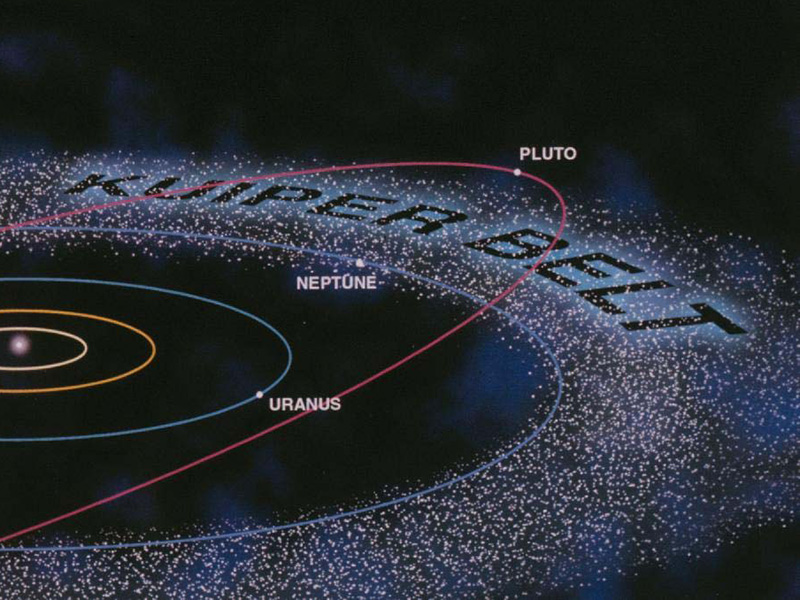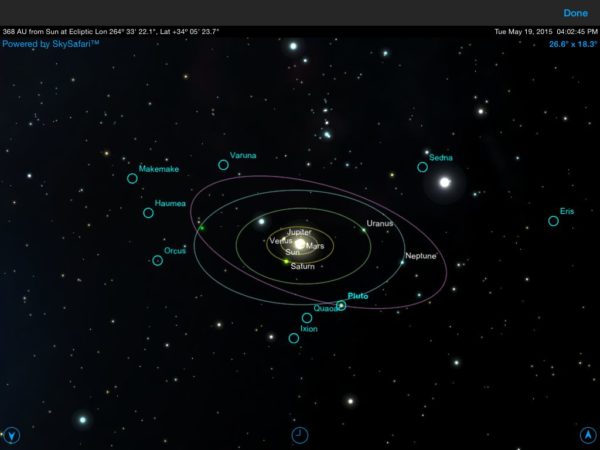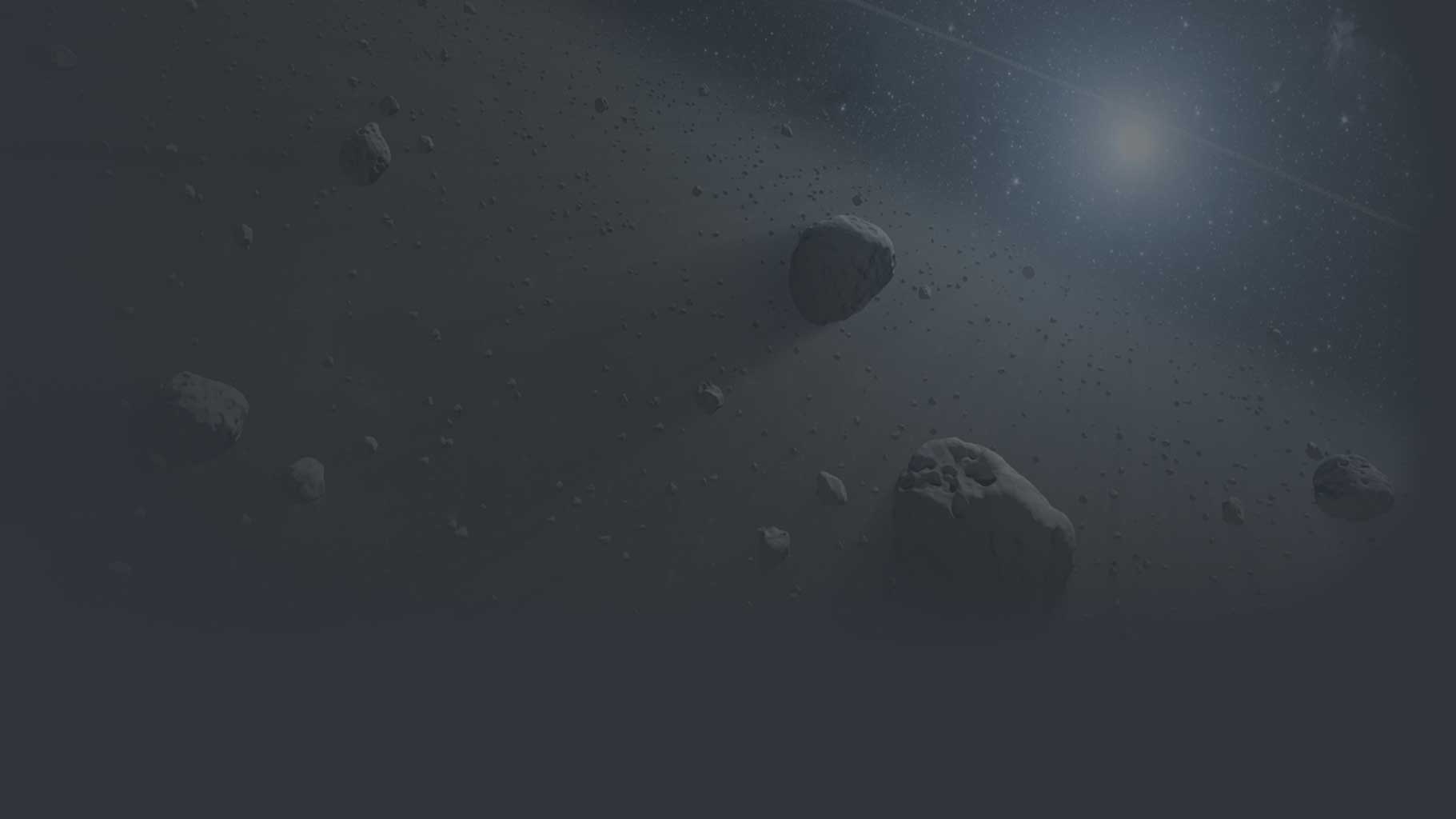Stranger Rings in the Kuiper Belt
Guest blogger Sue Kientz gifts us with some celestial jewelry in the form of her thought-provoking, groundbreaking article on planetary rings in the Kuiper Belt, that icy region past Neptune which may be populated by thousands of dwarf and minor planets. And so, without further ado, here’s Sue!
Saturn’s rings have been explored close-up by robotic spacecraft and found to be small moonlets marshaled into ring shape by nearby moons. Separating the rings are distinct gaps, also made by lunar influences, both examples of how small bodies can be surprisingly influential and in beautiful ways.
This design structure repeats. Saturn is not the only one with rings; Jupiter has gossamer rings as do Uranus and Neptune. Centaur Chariklo and Dwarf Planet Haumea have them. Even the Sun has a huge ring — the main-belt asteroids, corralled by Jupiter and Mars.
So it should not surprise that there is ring-like structure in the Kuiper Belt, itself the Sun’s “outer” ring, maintained by Neptune, but not without gravitational coaxings from Uranus, Saturn, and Jupiter. These giants use gravity to “bully” big Dwarf Planets into safe zones where they peacefully orbit. If they stray from these zones, they’re thrown clear of our solar system or pulled inward and broken into asteroids.
Along these negotiated pathways, the Dwarfs glide in similarly-timed orbits. Each grouping’s dominant body is accompanied by smaller companions that move slightly faster or slower round the Sun than their “ring leader.” Compare the diameters to largest asteroid Pallas (512 km) and Chiron (218 km).
Orcus (245 years; 917 km), 1 moon
Pluto (248 years; 2,377 km), 5 moons
Ixion (251 years; 617 km)
2005 RN43 (266 years; 679 km)
2002 MS4 (272 years; 934 km)
Salacia (274 years; 846 km), 1 moon
Varuna (279 years; 668 km)
2002 TX300 (283 years; 286 km), unusually bright fragment of Haumea
Haumea (284 years; 2,100 x 1,680 x 1,074 km), football shaped with ring, 2 moons
Quaoar (289 years; 1,110 km), 1 moon
Makemake (306 years; 1,502 x 1,430 km), 1 moon
Varda (313 years; 870 km), 1 moon
2002 AW197 (322 years; 768 km)
Gonggong (554 years; 1,230 km), 1 moon
Eris (559 years; 2,326 km), 1 moon
Collectively, the Kuiper Dwarfs detail an individual’s efforts to gain and retain power. Their groupings aren’t just physical arrangements but divisions of meaning, as ring groups reveal unifying themes, and members favor related strategies. Intra-ring position even mimics the visible-invisible solar-system divide, as Dwarfs orbiting interior to the Dominant trend Saturnine; those anterior, Uranian. Kuiper Dwarfs are “excluded” from solar system society, and they want back in. Eris (and Gonggong), mostly orbiting outside the Kuiper Belt, deal with disenfranchisement differently, a topic for another time.
Pluto Ring – Desire for power, control. Pluto-themed individuals can be manipulative, self-serving, and domineering, but with fortunate aspects, are protective and capable.
- Orcus – Relies on rules, procedures, and/or rituals to maintain control. Orcus natives lean conservative, even authoritarian (Soviet/Russian and North Korean leaders are studies in Orcus). Compulsive habits are common (challenging aspect), while masters at cataloguing nature include Darwin (Sun trine Orcus), Messier, and Linnaeus (both with well-placed Mercury-Orcus).
- Ixion – Orbiting on Pluto’s outer side, rebellious Ixion types chafe at rather than worship rules and guidance. The most thoughtful are daring and disobey unjust rules, like Martin Luther King (Sun trine Ixion) and Gandhi (Sun square Ixion).
2002 MS4 Ring begins at the orbital midpoint between Pluto and Haumea, “caught” between these heavyweights. What if you lack power (Pluto) or ability to effect change (Haumea)? MS4 personalities deliberate this conundrum, look for answers, search existing knowledge, think. Examples are Einstein, Newton, Oppenheimer, Goethe (all with Sun trine MS4), Edison and Hawking (both Sun square MS4).
- 2005 RN43 – RN43’s careful solution is stasis. “When there is no clear option, …do nothing” advised Nazi General Rommel, Sun (23 Scorpio) sextile RN43 (24 Virgo). Mike Pence, Sun (16 Gemini) opposite RN43 (20 Sagittarius), waxes expressionless when Trump drops whopper gaffes. At 18 Pisces, RN43 has squared Pence’s Sun since Inauguration.
- Salacia – Daring or reluctant to speak, waiting for perfect time (supportive), or outspoken, no filter (challenging). Unorthodox President Trump’s Salacia is conjunct his Moon/opposite Sun. He says whatever he thinks.
Haumea Ring – Agents of Change, creators of new reality, destroyers when crossed or frustrated. Haumea is the transformer you thought was Pluto’s purview, understandable since both were in close, extended conjunction twice in the last 150 years and now inch to a powerful square, so their two operations seemed all Pluto’s doing. Haumea heals, fixes, changes the game, eliminates, renews. Haumeans manifest as killers like Jeffrey Dahmer (Sun square Haumea) and problem solvers like Dog Whisperer Cesar Millan (Sun conjunct Haumea). Changing things empowers.
- Varuna constructs new worlds with language. Fortunate placements grace authors, speakers, translators; challenging ones expose phonies and liars. Champollion (Sun square Varuna/Jupiter) decoded the Rosetta Stone, revealing Ancient Egypt’s long-hidden past, at progressed Sun (4 Aquarius) trine p. Varuna (3 Libra).
- 2002 TX300 reports or transmits what is happening (“reality”) either accurately (supportive) or misleadingly (challenging). TX300 identifies broadcasters, journalists, diarists, and conspiracy theorists. Walter Cronkite, Rush Limbaugh, Alex Jones, and Bill Maher (all Sun conjunct TX300) are noted for delivering their take on current events, with the reliability and political bent of their views indicated elsewhere, like sign placement. Conservative darling Limbaugh has Sun/TX300 in Capricorn (and Mercury square Saturn) while Libertarian/Liberal-leaning Maher has the conjunction in Aquarius.
- Quaoar creates or participates in playful activities like sports, dance, drama/comedy, pranks (supportive) or games of risk (challenging). Quaoar rejects drastic Haumea tactics, rather will “slay” you on the playing field, ridicule you in a stand-up, or dance your demise. Tiger Woods (Sun sextile Quaoar), Muhammad Ali (Sun trine Quaoar), and Walt Disney (Sun trine Quaoar) are masters of “play.”
Makemake Ring considers Mind their superpower. If Mercury is elementary thought, Jupiter expanded knowledge, and Uranus erudite intelligence, Makemake is unexpected genius, bizarre breakthroughs, (literally) shocking discoveries. Witness electricity’s inventors Ben Franklin (Sun trine Makemake), Tesla (Sun sesquiquadrate Makemake), Edison (Sun-Mercury-Makemake stellium). Evil genius Bernie Madoff (Sun sextile Makemake) gobsmacked everyone with his multibillion-dollar fraud, uncovered at transiting Sun square Makemake.
- Varda – Keen eyesight, awareness, or intuition (supportive); trouble seeing, perceiving, conceiving (challenging). A sudden insight gripped Alan Guth, that the Universe vastly “inflated” post-Big Bang, at transiting Varda (10 Scorpio) trine his Sun (8 Pisces) and his p. Sun (11 Aries) opposite p. Varda (11 Libra).
- 2002 AW197 (“Edison” in More Plutos) – A new path, novel idea (supportive); false start, problematic innovation (challenging). Edwin Hubble arrived at Mount Wilson at p. Sun (29 Sagittarius) trine p. AW197 (28 Aries), a career change that led to proof that the Universe wasn’t just our Milky Way galaxy, but exponentially bigger.
Dwarf Planets reveal surprising order both in their physical placement and how they itemize our self-protective instincts to control, hesitate, change, and innovate. These are our Rosetta Stones, unveiling a multifaceted perspective of the subterranean powers within us – a veritable goldmine.
Sue Kientz, author of More Plutos (2015), has studied astrology since 1977, and specializes in the largest Asteroids (Pallas, Vesta) and new Dwarf Planets (Eris, Makemake, Haumea, Sedna, Gonggong, Orcus, and others). Sue is currently writing a general-audience book on the Dwarfs, casting their addition to Astrology as a transformational breakthrough, comparable to Medicine’s discovery of microorganisms. Since rudimentary keywords barely scratch the surface of the Dwarf Planets’ meanings in a short article such as this, visit MorePlutos.com for the supporting evidence, including free book chapters and more articles. Sue posts on Facebook: https://www.facebook.com/MorePlutos; E-mail: Sue@MorePlutos.com





